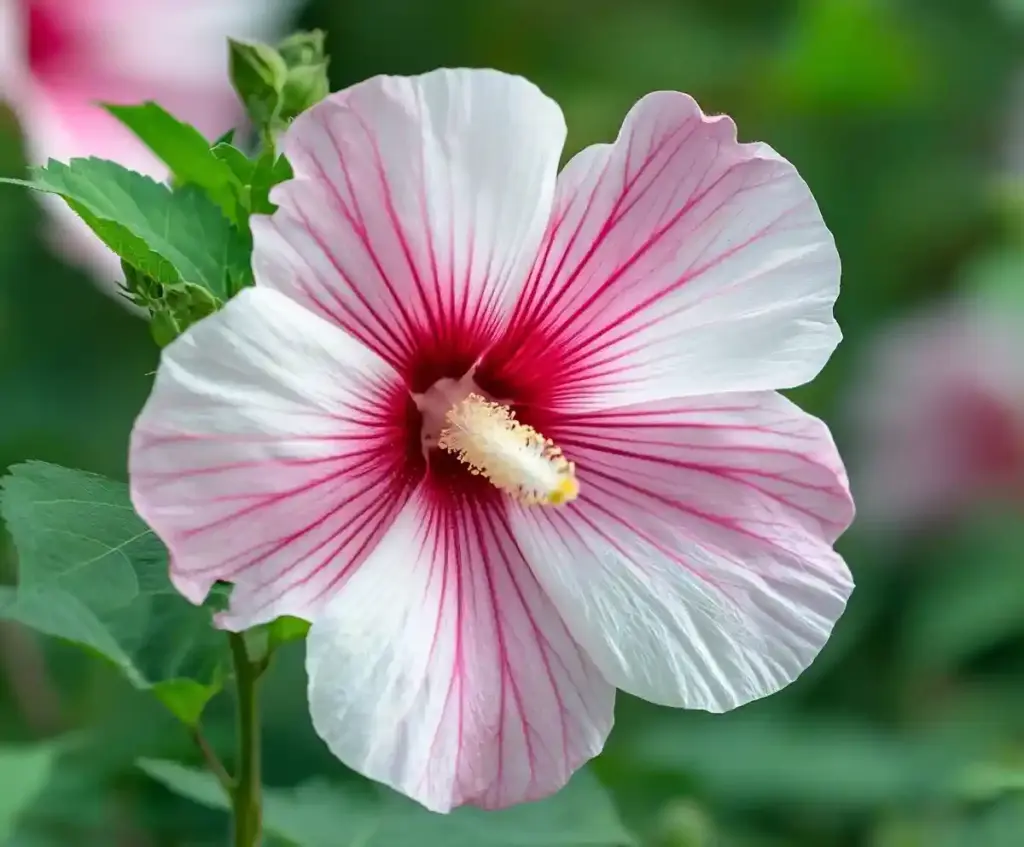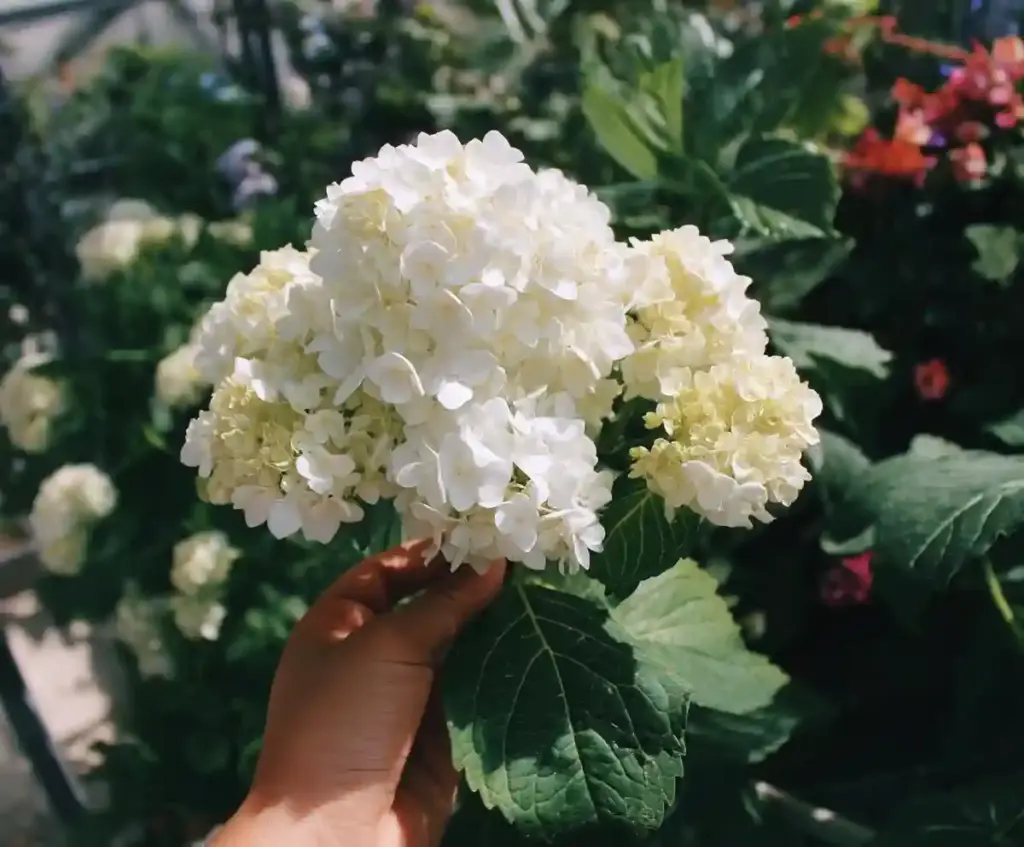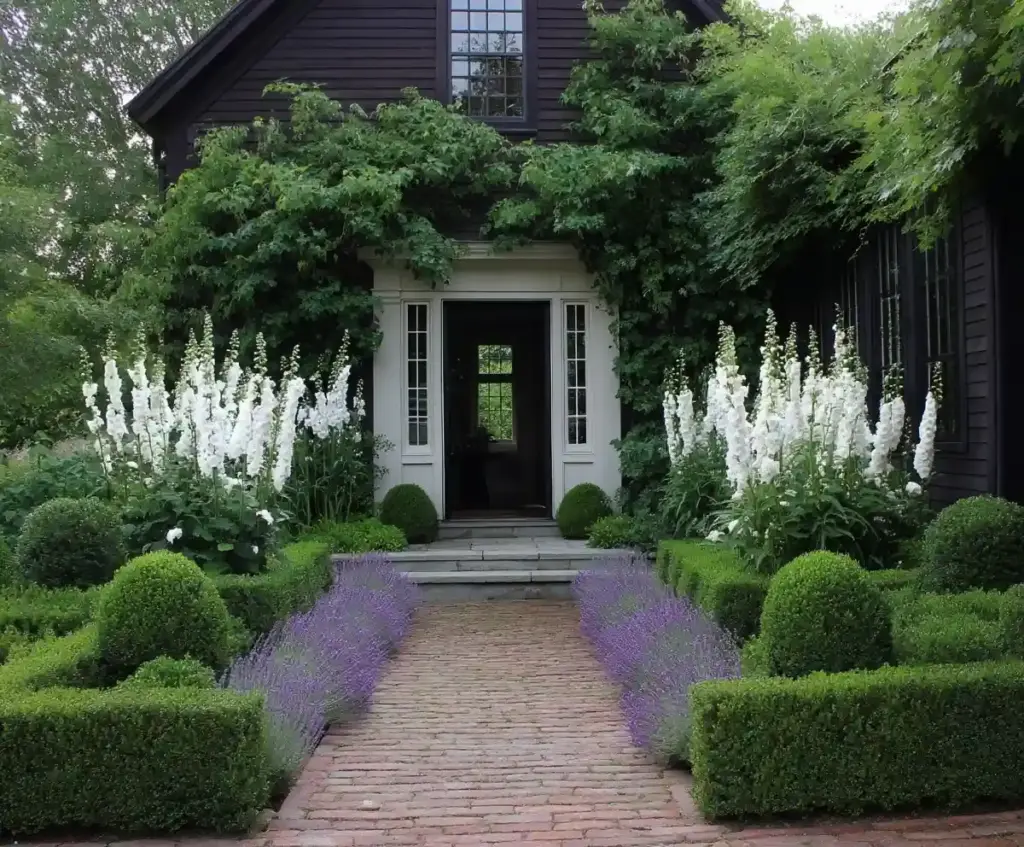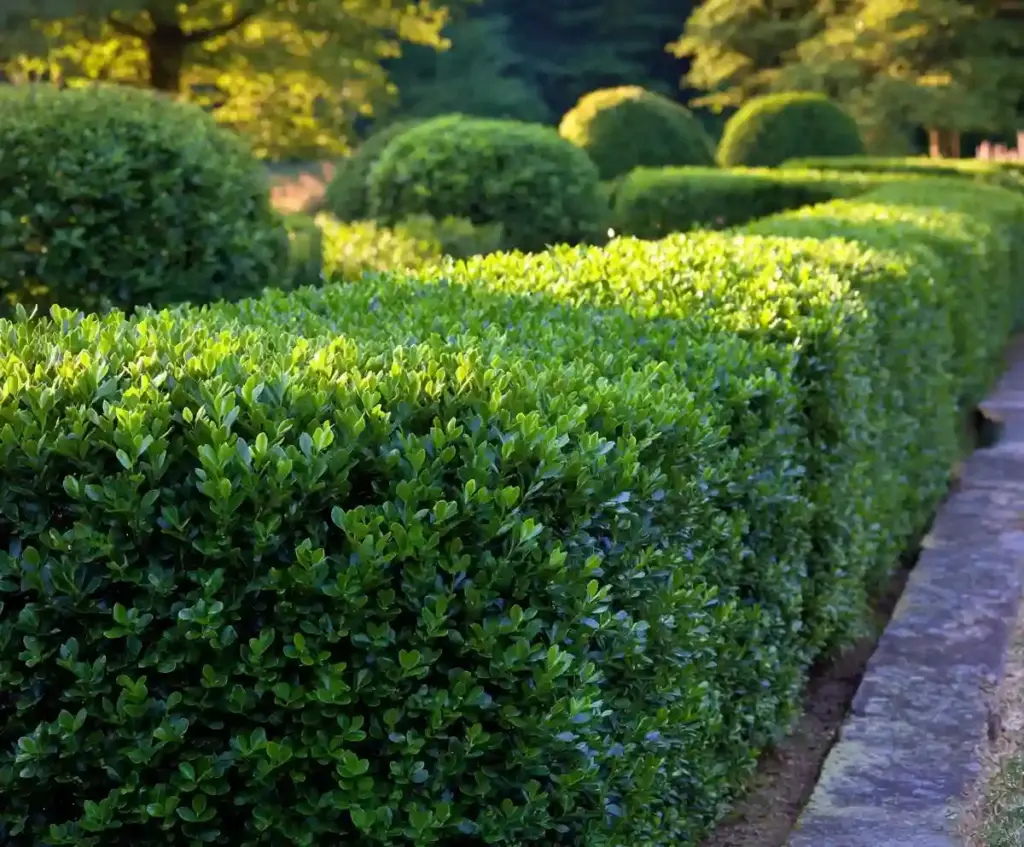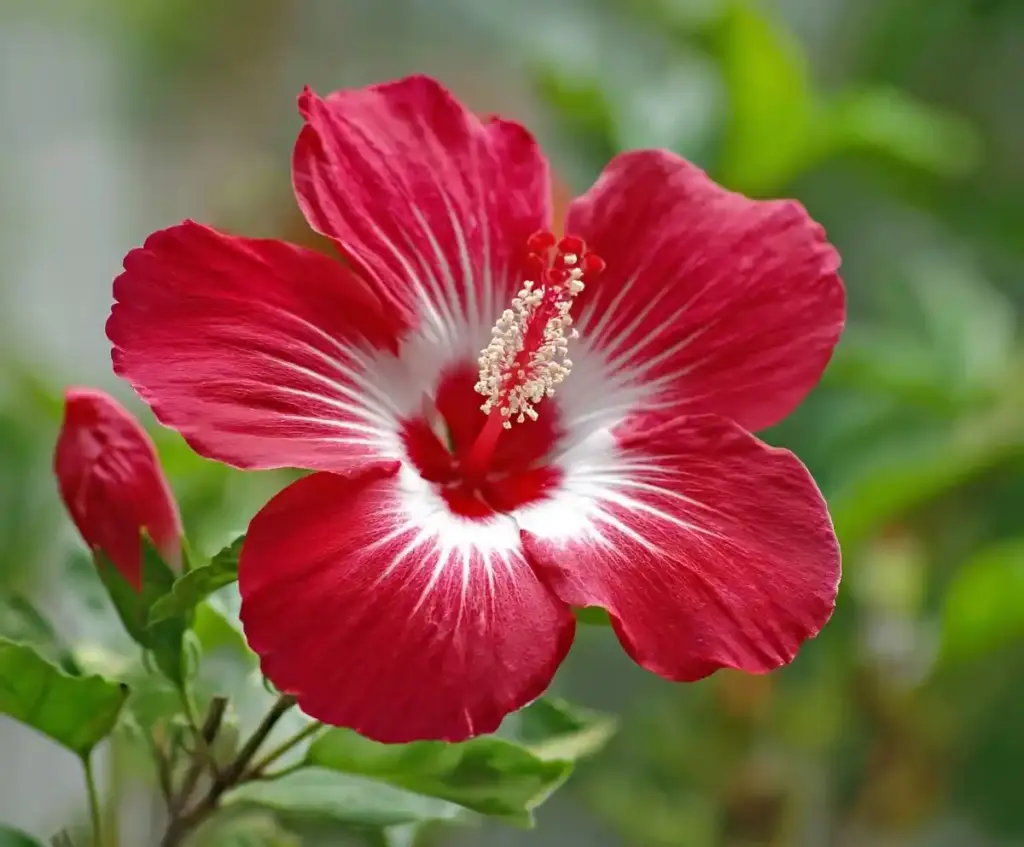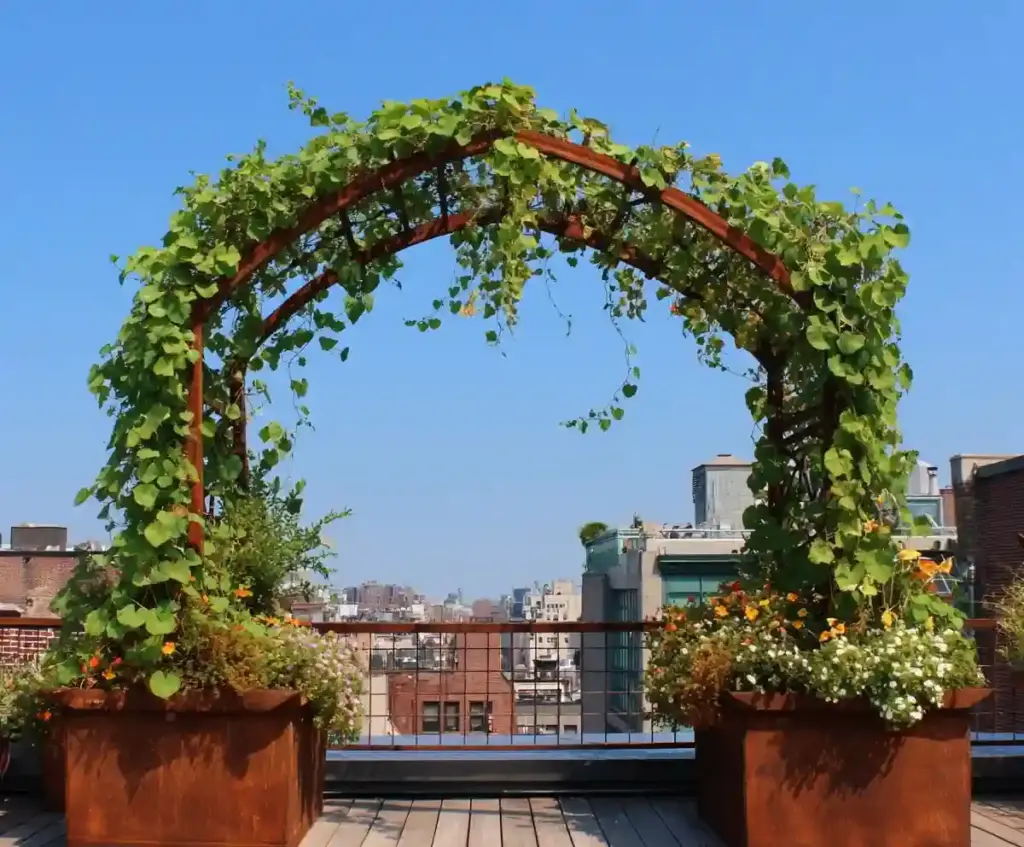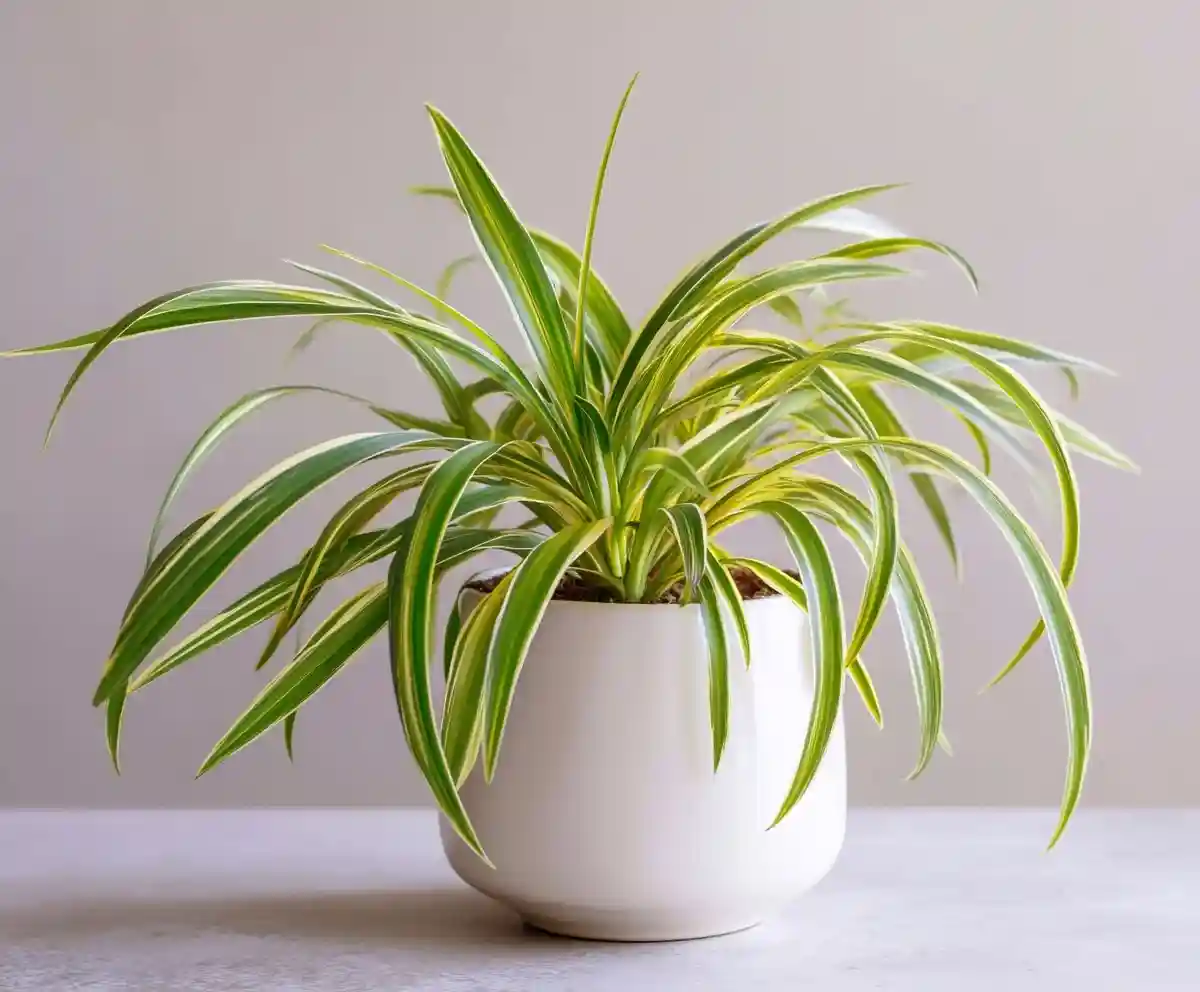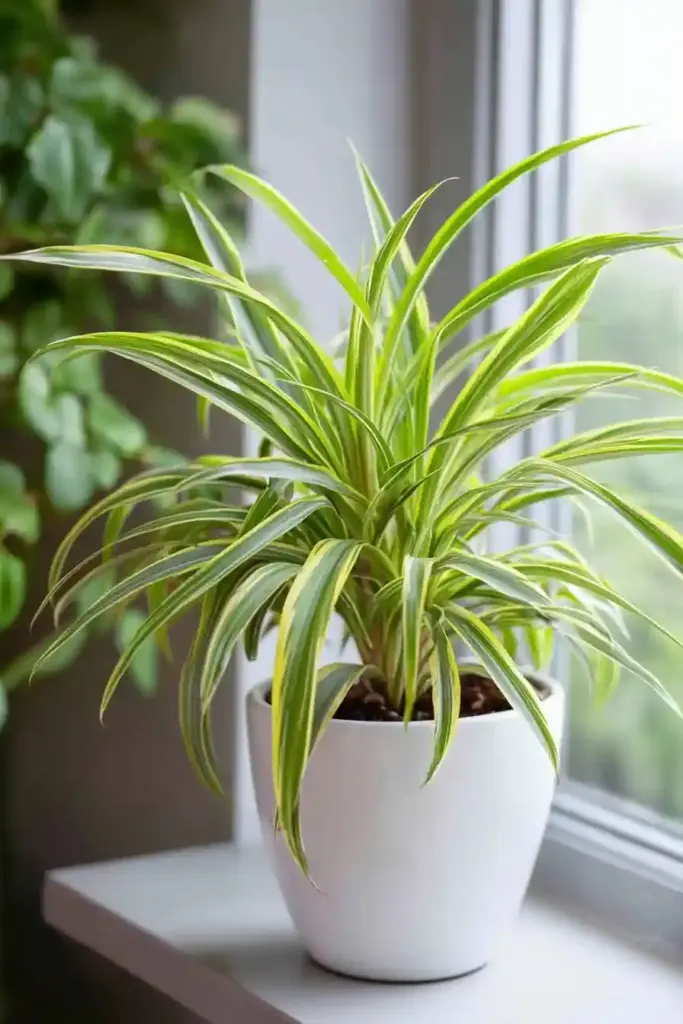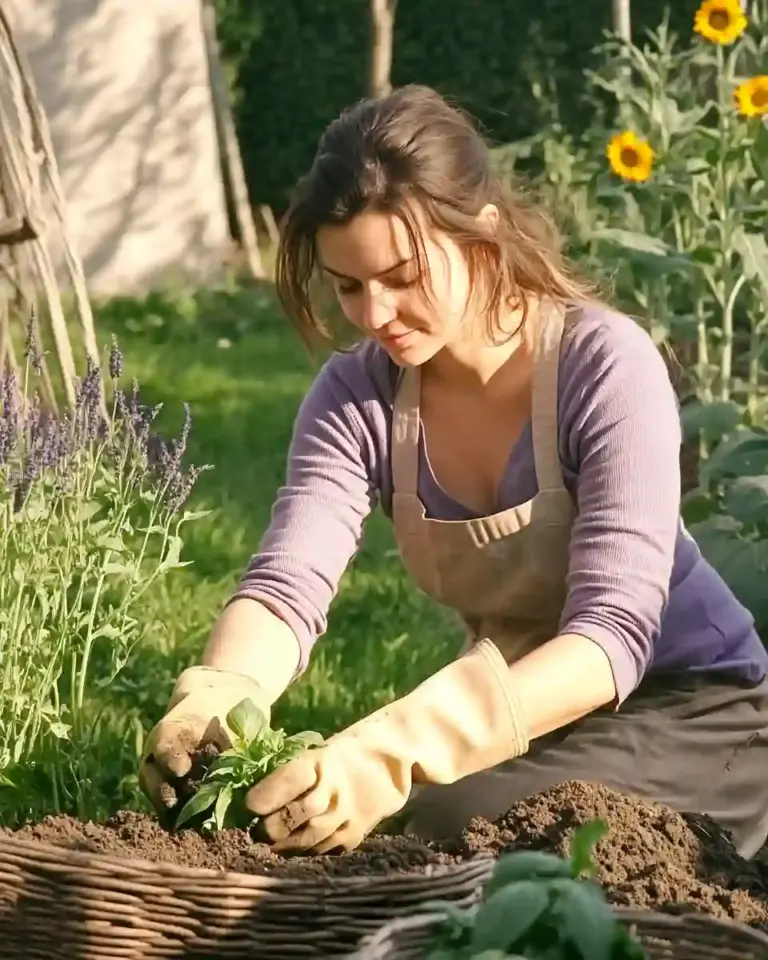Spider plant care is refreshingly simple, making it a favorite for both seasoned growers and first-time plant parents. With its arching green-and-white striped leaves and dangling “babies,” the spider plant (Chlorophytum comosum) brings energy and freshness to any space. Native to tropical regions of Africa, it’s not only resilient and fast-growing but also pet-safe and air-purifying.
In this guide, you’ll find everything you need to keep your spider plant happy—watering tips, light preferences, propagation techniques, and troubleshooting help. It’s the kind of plant that thrives even when you forget about it now and then—truly one of the best indoor companions.
Table of Contents
Why Spider Plants Belong in Every Home
It’s no wonder the spider plant continues to be one of the most popular houseplants around. It’s adaptable, attractive, and nearly impossible to kill—what’s not to love?
🌬 Air-Purifying Powerhouse
Spider plants are proven to remove indoor toxins like formaldehyde, xylene, and carbon monoxide, improving air quality naturally. They’re a smart, stylish addition to any living space, especially in bedrooms and offices.
🐾 Safe for Pets and Kids
Unlike many houseplants, spider plants are non-toxic to cats, dogs, and humans. That means fewer worries if curious little hands—or paws—start to explore.
🌿 Built-In Propagator
Spider plants are propagation champions. As they mature, they send out long runners with tiny “spiderettes” that dangle like ornaments. These baby plants root easily, giving you endless green gifts to pot up or share.
💪 Tolerant and Low-Maintenance
Busy week? Forgot to water? No problem. Spider plants tolerate inconsistent care, making them ideal for people with a full schedule or those new to houseplant care.
Whether placed in a hanging basket or perched on a sunny shelf, spider plants bring instant joy with minimal effort.
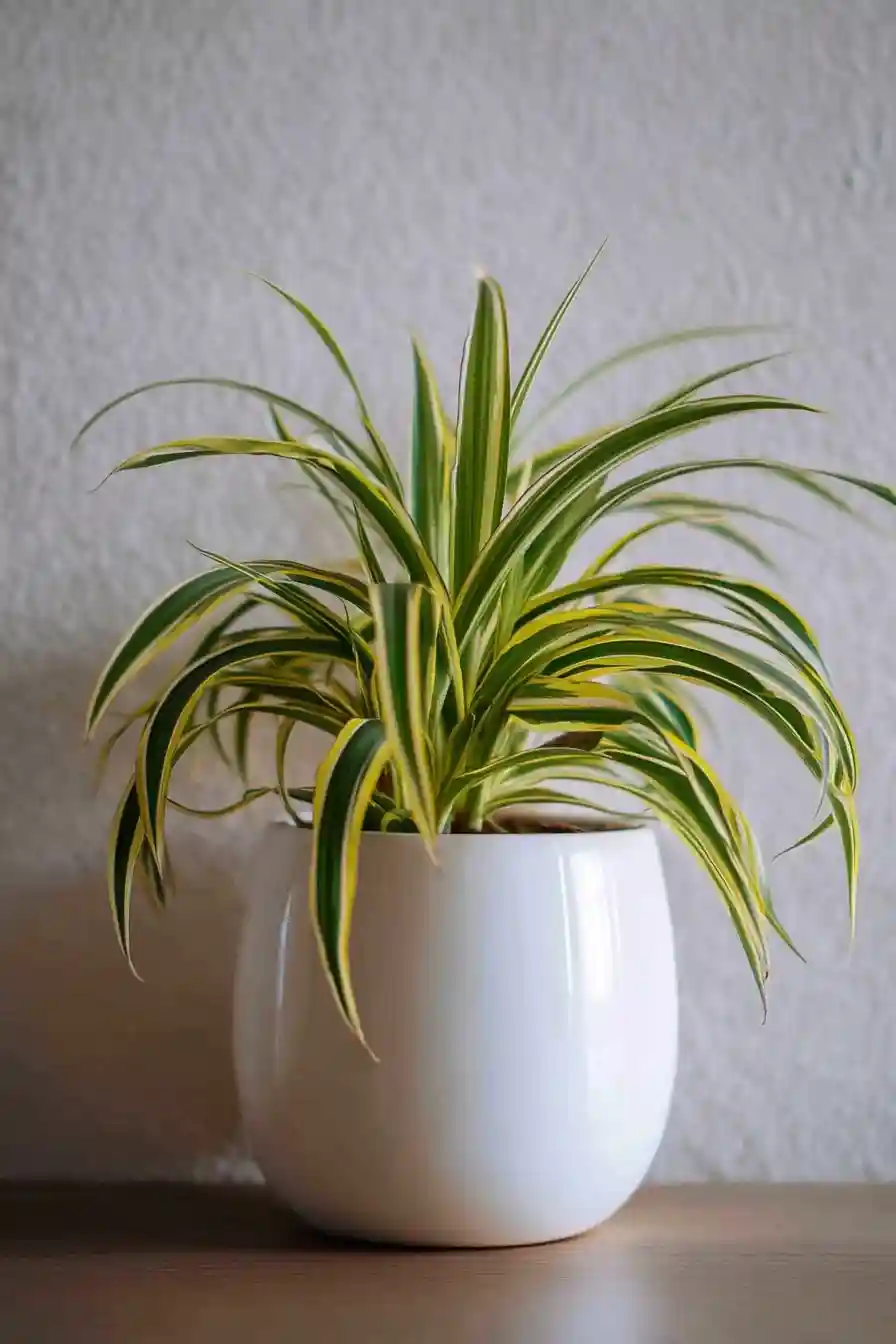
The Simple Spider Plant Care Routine
A spider plant doesn’t ask for much—but giving it the right light, water, and soil will keep it thriving and producing babies for years.
💧 Watering Wisdom
- When to Water: Check the top 1–2 inches of soil—if it’s dry, it’s time to water. This usually means once a week in warmer months and every 10–14 days during winter.
- How to Water: Soak the soil thoroughly until excess drains out the bottom. Then let the plant dry out before the next watering.
- Water Quality Tip: Use room-temperature, filtered, distilled, or rainwater. Spider plants are sensitive to fluoride and chlorine—brown tips are often a sign of water issues.
Tip: Let tap water sit overnight before using it, or switch to rainwater for happier foliage.
☀️ Light Preferences
- Best Light: Bright, indirect light helps spider plants maintain their vibrant stripes and encourages more spiderettes.
- Can Tolerate: Medium-light conditions like north-facing windows or interior rooms with soft daylight.
- Avoid: Harsh afternoon sun, which scorches leaves, and low-light corners, which fade the variegation and stunt growth.
Ideal spots include east-facing windows or filtered light near sheer curtains.
🌱 Soil & Feeding
- Soil Type: Use a light, well-draining potting mix. A blend of regular indoor soil with perlite, pumice, or orchid bark works well.
- Pot Choice: Spider plants prefer being slightly root-bound, so use a pot with drainage holes. Glazed ceramic or plastic pots are both good options.
- Fertilizer: Feed once a month during spring and summer with a balanced liquid fertilizer at half strength. Skip feeding in fall and winter.
Too much fertilizer can lead to leaf tip burn—less is more.
Troubleshooting Common Spider Plant Problems
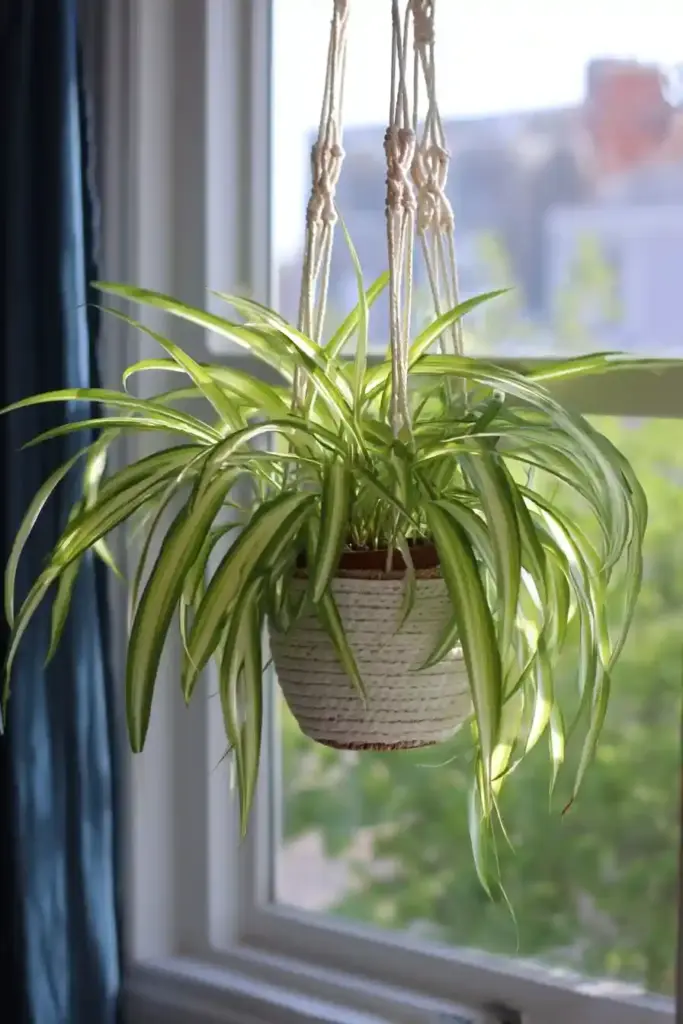
Even a forgiving plant like the spider plant can show signs of stress if something’s off. Here are the most frequent problems and how to fix them quickly:
🔸 Brown Leaf Tips
- Cause: Fluoride or chlorine in tap water; inconsistent watering; dry indoor air.
- Fix: Switch to distilled or rainwater. Keep humidity around 40–60% and avoid over-fertilizing. Trim the brown tips with clean scissors if needed.
🌤 Pale or Faded Leaves
- Cause: Too much direct sunlight.
- Fix: Move the plant to a spot with bright, indirect light. Harsh rays can bleach the stripes.
🥀 Limp or Drooping Leaves
- Cause: Underwatering or rootbound conditions.
- Fix: Soak the pot in a tray of water for 30 minutes if it’s bone dry. If roots are circling the pot, it’s time to repot.
🧬 No Spiderettes
- Cause: Immature plant or insufficient light.
- Fix: Make sure the plant is at least 1–2 years old and receiving bright, indirect light. Spiderettes usually appear in spring and summer.
Bonus Tip: Spider plants are surprisingly expressive—they let you know when they’re unhappy. Just look at their leaves!
Propagation Made Easy: Grow More Spider Plants for Free
One of the most delightful things about spider plants is how generously they reproduce. Once your plant matures, it sends out long stems with baby plants—called “spiderettes”—ready to be rooted and potted.
🌱 Step-by-Step Propagation Guide
- Wait for Roots
Look for spiderettes that have tiny nubs or roots already forming at the base. The longer you leave them attached, the stronger they’ll grow. - Cut Carefully
Use clean, sharp scissors to snip the baby plant from the runner just below the root nub. - Rooting Options
- In Soil: Plant the spiderette directly in moist, well-draining soil. Keep it lightly watered and in indirect light.
- In Water: Place the spiderette in a glass of water. Once roots reach 1–2 inches, transfer to soil.
- Keep Moist (Not Wet)
Whether rooting in water or soil, keep the environment slightly humid and avoid letting it dry out completely during the first few weeks.
Pro Tip: Leave the spiderette attached to the mother plant while planting it in a small pot nearby. Once roots establish, you can safely snip it off.
Creative Display Ideas for Spider Plants
Spider plants aren’t just easy to care for—they’re also incredibly versatile in how you can style them. Their cascading leaves and playful spiderettes make them perfect for almost any room in your home.
🧺 Hanging Baskets
Let those long, arching stems do their thing! Hanging spider plants from the ceiling or a wall bracket lets the baby plants dangle naturally like living jewelry.
- Perfect for: Living rooms, sunrooms, or bedrooms with good light.
- Bonus: Hanging keeps them out of reach of curious pets.
🖥 Office Desk Charm
Spider plants thrive under fluorescent lights and don’t take up much space, making them great desk companions.
- Choose compact varieties like ‘Bonnie’ for a more contained look.
- Place in a decorative pot for a pop of greenery that boosts mood and productivity.
🛁 Bathroom Buddy
With the right lighting, spider plants love bathroom environments.
- The humidity from showers mimics their native tropical habitat.
- Make sure there’s a bright window or supplemental grow light nearby.
🌱 Mini Terrariums
Smaller varieties like ‘Hawaiian’ can be tucked into larger open terrariums.
- Pair with moss, river rocks, or decorative bark for a lush mini landscape.
- Keep airflow and drainage in mind to avoid rot.
No matter how you display them, spider plants bring fresh life and movement to your indoor space.
Popular Spider Plant Varieties to Collect
Spider plants may all share that signature arching shape, but their leaf colors and forms vary beautifully. If you’re looking to expand your plant collection, these standout varieties are worth considering:
🌿 ‘Vittatum’
- Look: Bright green leaves with a central white stripe.
- Size: 12–18 inches tall.
- Why We Love It: The most classic and widely available variety—perfect for beginners.
🌪 ‘Bonnie’
- Look: Curly, twisted green leaves with cream-colored centers.
- Size: 10–15 inches tall.
- Why We Love It: Its compact, curly shape is ideal for small spaces and hanging pots.
🌺 ‘Hawaiian’
- Look: Shiny leaves with golden-green centers and a compact rosette growth.
- Size: 8–12 inches tall.
- Why We Love It: Slightly more exotic with a glossy sheen and striking coloration.
⛱ ‘Variegatum’
- Look: Green leaves edged with white margins.
- Size: 12–24 inches tall.
- Why We Love It: Slightly bolder than ‘Vittatum’ and a real eye-catcher in hanging baskets.
These cultivars are often available at garden centers, plant swaps, or online sellers. Choose the one that fits your space and light best.
Final Thoughts
If you’re looking for a stress-free houseplant that’s beautiful, rewarding, and practically unkillable, the spider plant checks every box. Its graceful, arching leaves and adorable plantlets add charm to any room, while its air-purifying and pet-friendly nature make it a standout choice for homes and offices alike.
Give it a little light, the occasional drink of water, and room to grow—and your spider plant will reward you with fresh foliage and baby plants for years to come.
🌿 Love gardening inspiration? Follow me on Pinterest for bold plant ideas, tips, and seasonal color!
More Posts
